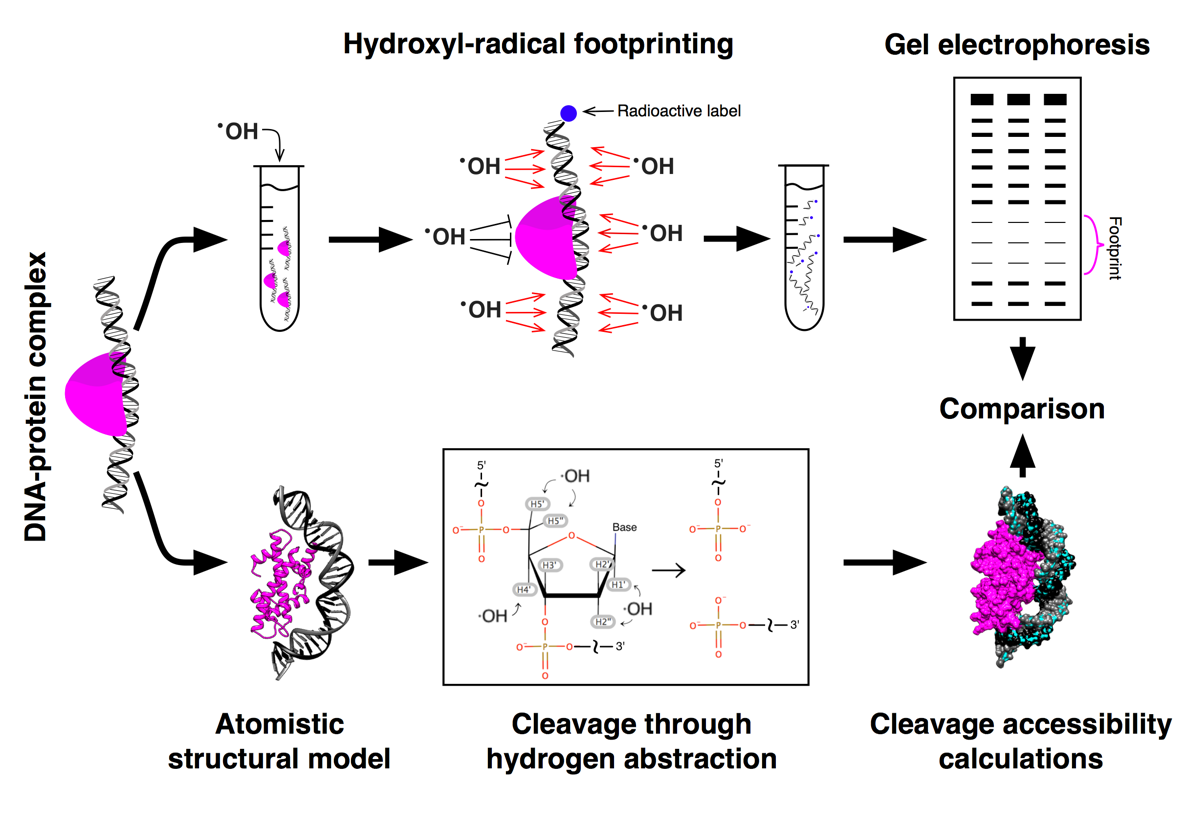HYDROID
Hydroxyl-radical footprinting (HRF) is a powerful method for probing structures of nucleic acid-protein complexes with single-nucleotide resolution in solution. Hydroxyl-radical footprinting interpretation for DNA (HYDROID) is a method to quantify HRF data and integrate them with atomistic structural models. The stages of the HYDROID protocol include the extraction of the lane profiles from gel images, quantification of the DNA cleavage frequency at each nucleotide and theoretical estimation of the DNA cleavage frequency from atomistic structural models. As input, HYDROID requires polyacrylamide gel electrophoresis (PAGE) images of HRF products and optionally can use a molecular model of the DNA-protein complex. The HYDROID protocol can be used to quantify HRF over DNA regions of up to 100 nucleotides per gel image. In addition, it can be applied to the analysis of RNA-protein complexes and free RNA or DNA molecules in solution. Compared with other methods reported to date, HYDROID is unique in its ability to simultaneously integrate HRF data with the analysis of atomistic structural models. Use the server
